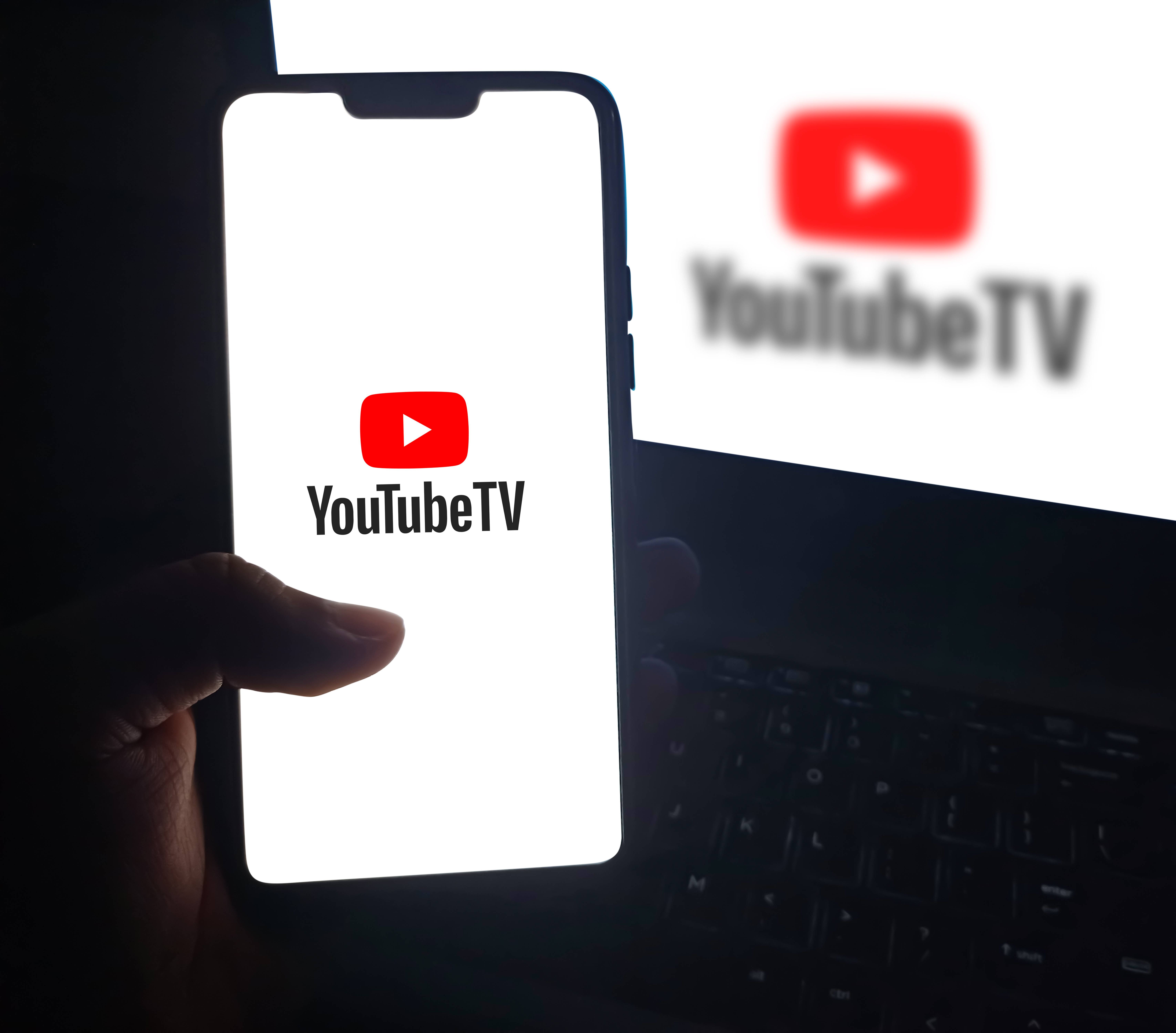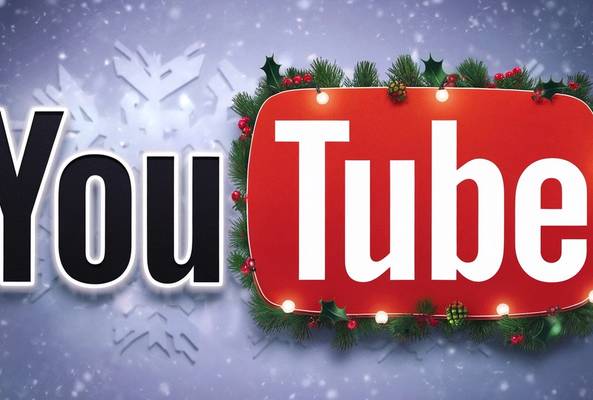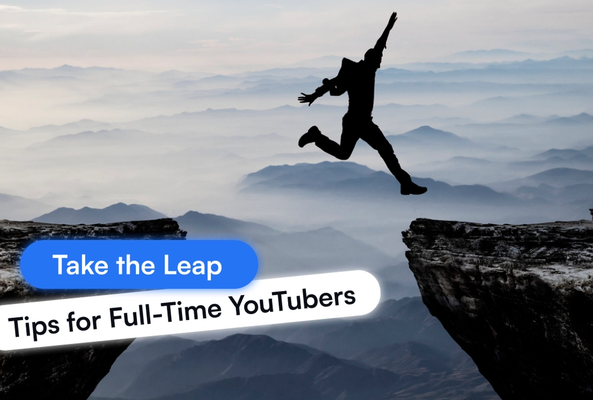In addition to being an avid movie and gaming enthusiast, Uttaran Samaddar is an experienced writer who has lent his creativity and unique perspective to various publications. He loves hearing and telling stories.
The Rise of YouTube on TV
Once known primarily for short-form content on mobile devices, YouTube has now become a dominant player in TV streaming, surpassing traditional streaming platforms and services. Viewers are watching, on average, over 1B hours of YouTube content on TVs daily, and TV is now the primary device for YouTube viewing in the U.S.

While most of the discussion around online video content is mostly around easily digestible vertical videos, we cannot overlook how YouTube is taking over the biggest screen in your household. And with this shift in the digital media landscape comes a host of new opportunities and possibilities!
YouTube on TV: The Shift
YouTube’s transformation from a mobile-first platform to a TV powerhouse is backed by impressive numbers:
- YouTube accounts for 8.6% of all TV streaming time, while Netflix lags at 7.9%.
- TV watch time on YouTube has increased by 400% in recent years.
- YouTube receives 28.5 billion visits per month, dwarfing Netflix’s 1.9 billion.
These figures highlight an undeniable shift—YouTube is the new television, and the living room has become the platform’s fastest-growing audience.
While Netflix and other services remain strong contenders, the lack of community engagement, higher costs, and limited content variety make it increasingly difficult to compete with the flexibility and personalization of YouTube on TV.
But why is this happening? Our creator John delves into this question at brilliant depths in the video above, so watch it now!
Why YouTube is Taking Over the TV Screen
YouTube talked about their big bets for 2025, among which they've discussed the rise of YouTube consumption on television. There are several reasons for this tectonic shift in the viewing habits of the audience, but a few of them stand out:
1. Unmatched Content Variety
Unlike Netflix and other subscription-based platforms, YouTube TV channels offer an ever-expanding library of user-generated and professional content. Whether it’s binge content, live streams, educational tutorials, long-form, or even Shorts, YouTube delivers a personalized and diverse entertainment experience that traditional TV struggles to match.
2. Engagement and Community Building
Other platforms offer a passive viewing experience, whereas YouTube TV fosters real engagement. Viewers can like, comment, and interact with creators, forming deeper connections. Features like live chat, community posts, and membership perks help YouTube TV channels build dedicated communities, increasing loyalty and repeat watch time.
Read More: How to Use the YouTube Community Tab and Engage with Viewers
3. Cost-Effectiveness
Popular streaming services are losing ground due to subscription fatigue. YouTube, on the other hand, has free access supported by ads, making it more attractive to budget-conscious audiences.
You can pay for YouTube Premium and go ad-free, and that would give creators a share of the revenue too. With its flexible pricing model, YouTube on TV has positioned itself as a more accessible and cost-effective alternative to traditional streaming platforms.
4. Recommendation and Discovery
Unlike static content catalogs of other streamers, YouTube’s recommendation system keeps users engaged with fresh, tailored content based on their interests. This dynamic approach ensures that YouTube TV channels remain highly discoverable, encouraging audiences to keep watching binge content-for hours.
Read More: Understanding the YouTube Algorithm in 2024
5. Monetization for Creators
YouTube has paid out over $70 billion to creators in the past three years, making it the leading platform for content monetization.
Opportunities for creators include:
- Ad revenue through the YouTube Partner Program
- Channel memberships and Super Chats for direct viewer support
- Sponsorship deals with brands
- Merchandise and affiliate marketing integrations
For creators, YouTube on TV presents a massive opportunity to generate revenue while building a loyal fan base.
Read More: How to Get Monetized on YouTube
6. Seamless Interconnectivity
YouTube is one of the few platforms that has a significant presence on all your devices regularly. Whether it's the YouTube TV app that lets you easily access content on television or cast your phone on your TV screen, the ecosystem is inclusive and totally seamless.

How Creators Can Optimize for YouTube TV
With more people streaming YouTube TV channels on the big screen, content creators must adapt their strategies to maximize engagement and growth.
Optimize Content for the Big Screen
Since more users are watching YouTube on TV, creators should produce high-quality, visually appealing content that looks great on large displays.
Best practices include:
- Filming in 1080p or 4K for crystal-clear visuals
- Using bold thumbnails and large fonts for easy readability on TV screens
- Creating long-form videos that encourage binge content consumption
Making binge-able content for TV viewers is one of the most important strategies to keep in mind here. You can make your viewer's life much easier by making playlists that keep them hooked!
Use the "Watch With" Feature
Many users watch YouTube TV on their television while using their phone for interaction. Creators can capitalize on this second-screen behavior by using the "watch with" feature that
- Encourage viewers to comment and participate in live polls
- Promote exclusive content through community posts and social media
- Direct audiences to merchandise stores and affiliate links
Utilize the Algorithm
YouTube’s algorithm thrives on watch time and viewer engagement. To increase visibility on YouTube TV channels, creators should:
- Focus on long-form videos that keep viewers engaged
- Use SEO-friendly video titles and descriptions
- Encourage likes, shares, and comments to boost discoverability
What is YouTube TV?
YouTube TV is a subscription-based streaming service that includes 100+ broadcast, cable, and regional sports networks. Unlike regular YouTube, it provides live TV streaming, cloud DVR capabilities, and local channel access. You can also see trending videos on YouTube TV.
Recently YouTube TV has agreed to a deal with Paramount to include big channels like CBS, Comedy Central, Nickelodeon, and MTV.
As of now, YouTube TV has over 8 million paying subscribers. In the video above, the YouTube team will tell you how to sign up for this service in simple steps. Currently, it's only available in the US.
All the things we've discussed here point to the glaring truth: YouTube is the new television. For the generations to come, YouTube might be the only definition of TV. So, strategize your content accordingly and get that watch time rising!
FAQs
What factors have contributed to YouTube’s rapid rise as a TV streaming powerhouse?
YouTube’s shift from mobile-first content to dominating TV viewing is driven by its unmatched content variety—including long-form videos, live streams, educational tutorials, and Shorts—its robust recommendation algorithm, and its interactive community features like live chat and comment sections. Additionally, cost-effectiveness (with free access supported by ads and an option for ad-free Premium), creator monetization opportunities, and seamless interconnectivity across devices have all fueled this transformation.
How does YouTube on TV compare to traditional streaming platforms like Netflix?
Unlike Netflix, which offers an on-demand library of movies and series, YouTube on TV provides a dynamic, interactive live TV experience. Viewers are increasingly shifting to the big screen—with stats showing over 1 billion hours watched daily—thanks to YouTube’s personalized recommendations, community engagement, and real-time features. This positions YouTube as a more flexible and engaging alternative to the more static, subscription-based models of traditional streamers.
What unique opportunities does YouTube on TV offer for content creators?
Creators benefit from YouTube on TV through extensive monetization options like ad revenue, channel memberships, and Super Chats, plus the chance to reach a massive, engaged audience on the largest screen in the home. The platform’s algorithm rewards longer watch times and high engagement, which means that creators can build loyal communities and potentially earn a share of the billions paid out in creator revenue—over $70 billion in the past few years.
How can content creators optimize their videos for the TV experience on YouTube?
To capture the growing TV audience, creators should produce high-quality visuals (preferably in 1080p or 4K), use bold thumbnails and larger fonts for readability on big screens, and structure content into binge-worthy playlists. They can also capitalize on features like “Watch With” to drive second-screen engagement, and ensure titles, descriptions, and SEO-friendly tags are optimized for YouTube’s discovery algorithm.
In what ways is YouTube on TV a cost-effective option compared to other streaming services?
YouTube on TV offers a flexible, ad-supported model that appeals to budget-conscious viewers, reducing the need for multiple expensive subscriptions. Its free access—with the option to upgrade for an ad-free experience—combined with a vast, diverse content library and interactive features, positions it as an affordable yet innovative alternative to traditional cable and other streaming platforms that typically charge higher monthly fees.
How to Record on YouTube TV?
1. Go to YouTube TV at tv.youtube.com 2. Next to a show, sports team, or event you want to record, tap Add. All current and upcoming airings will be recorded and added to your Library. 3. Next to a show, sports team, or event you want to remove, tap Remove. All current and upcoming airings will be removed. Your recorded programs will be available until they expire
YouTube TV vs YouTube Premium
For those who prefer an ad-free experience, YouTube TV vs YouTube Premium becomes an important comparison. YouTube TV provides live television streaming, whereas YouTube Premium offers ad-free videos, offline downloads, and access to exclusive content.






